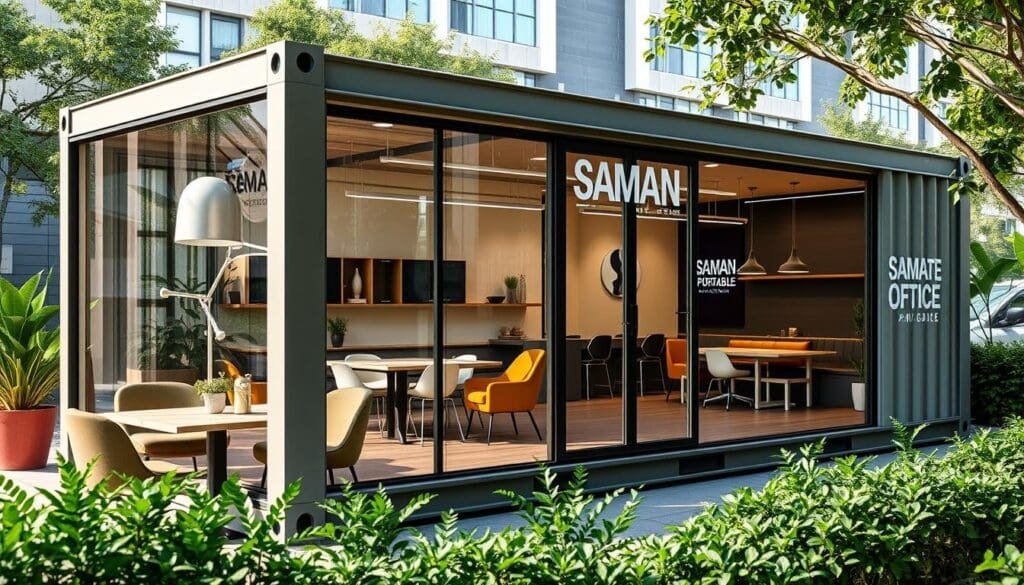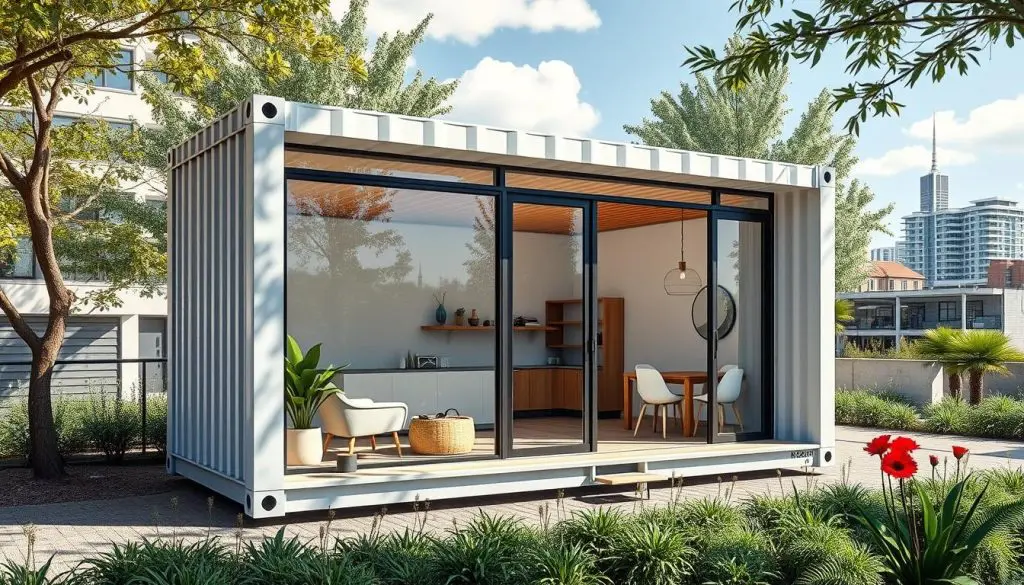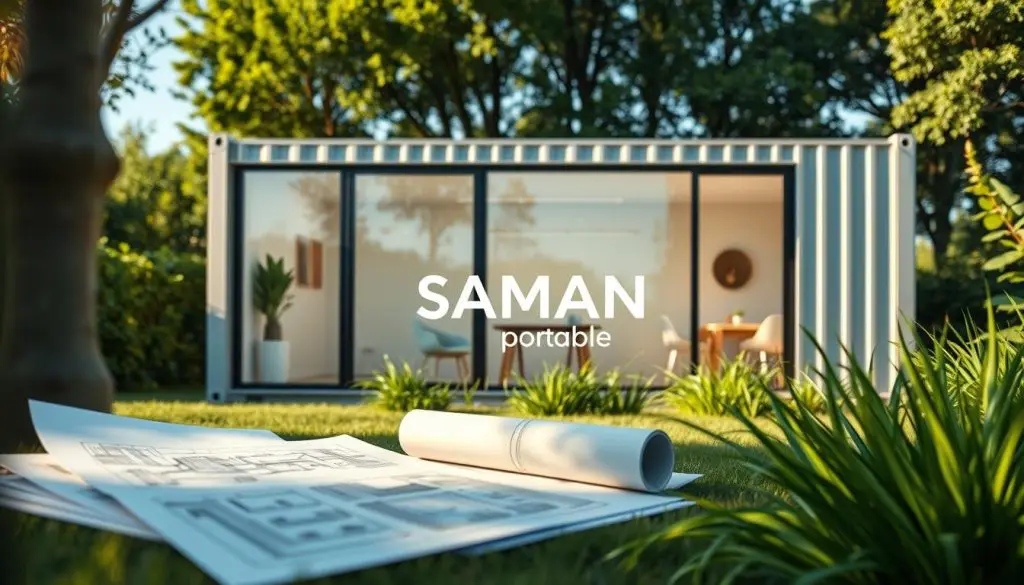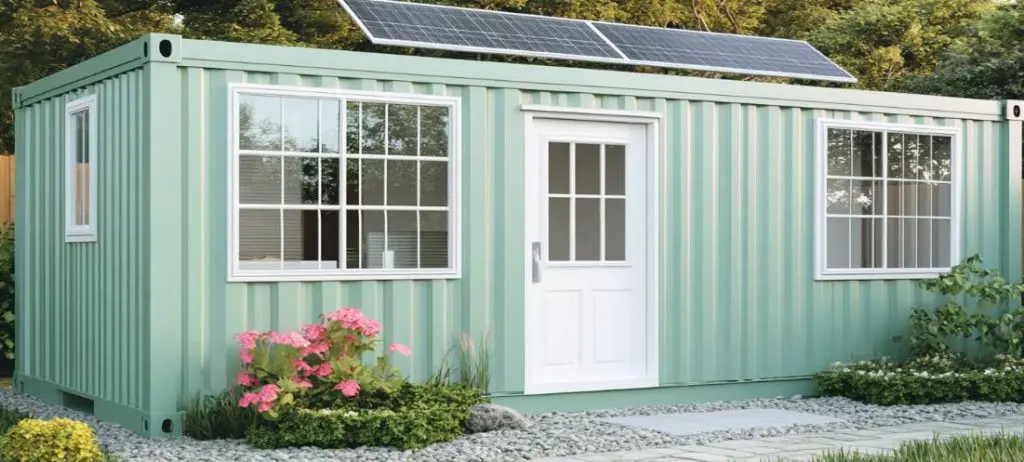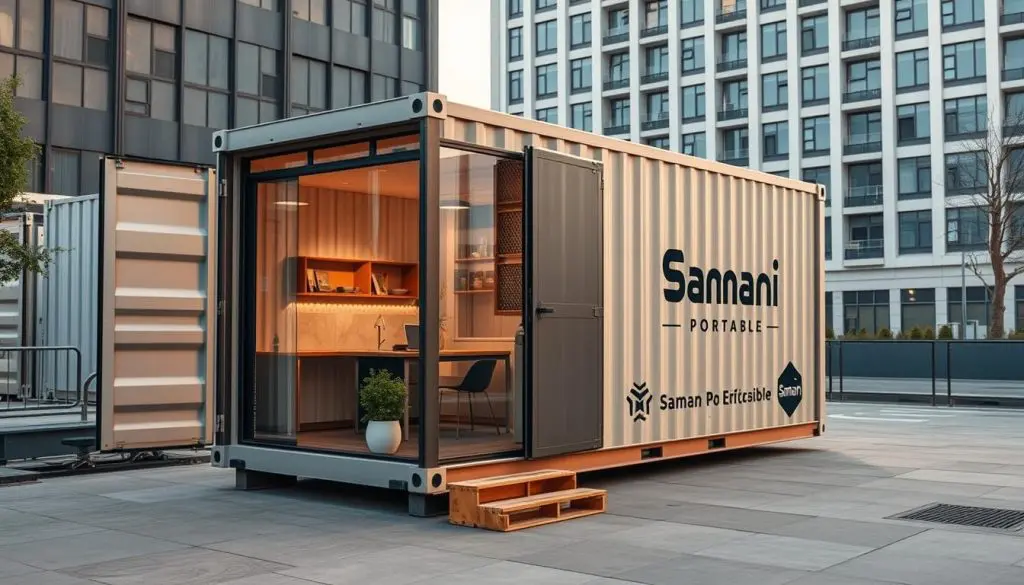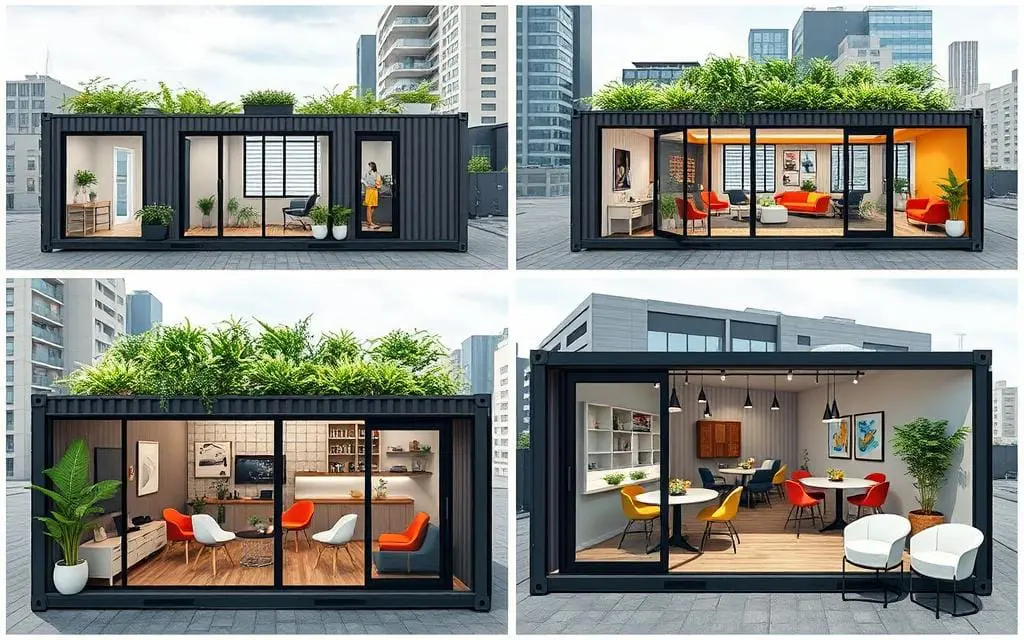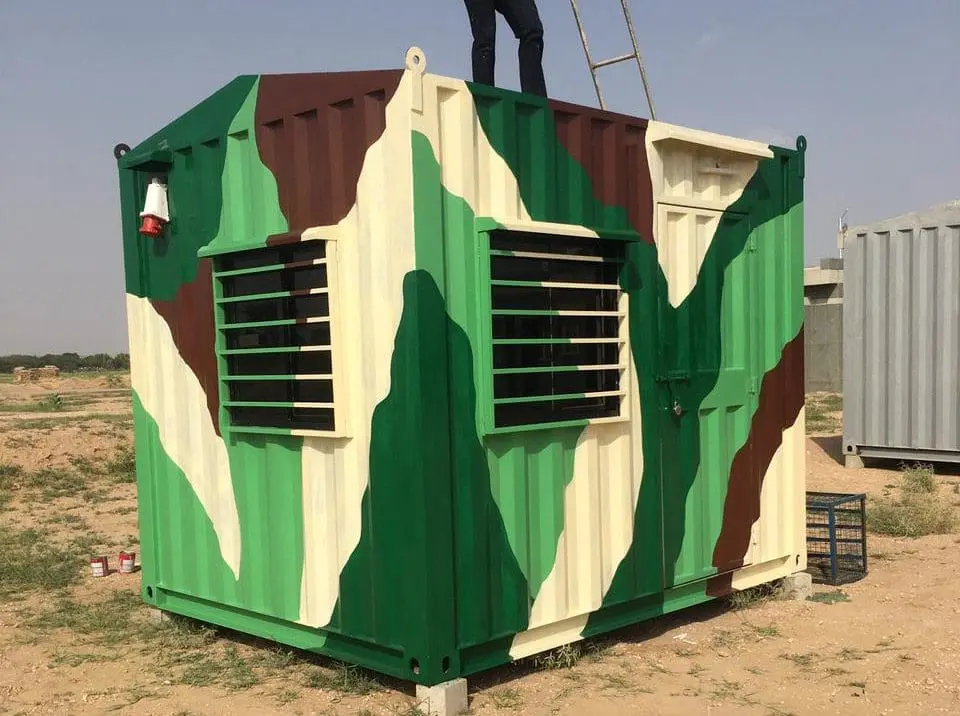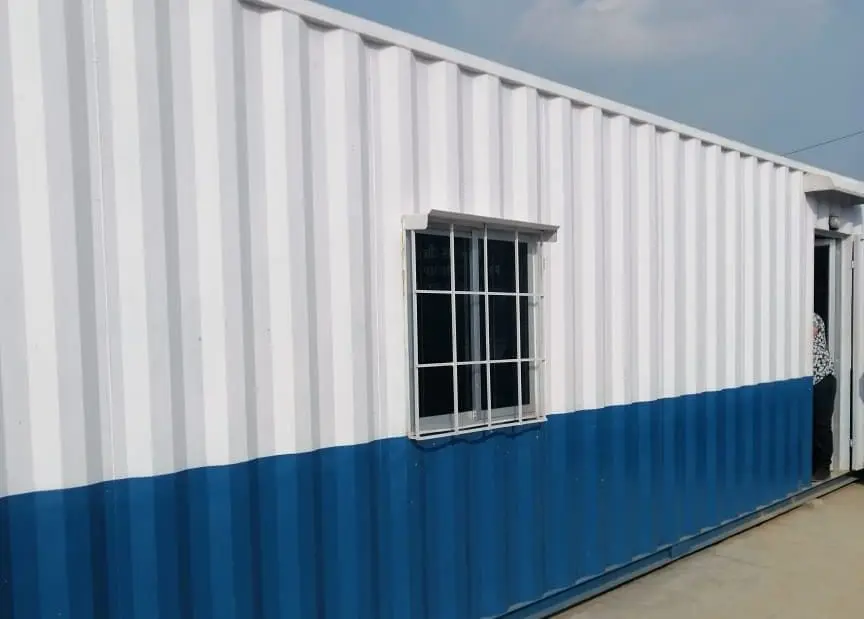Prefab Office Spaces: Modern, Customizable, and Practical for Your Business Needs
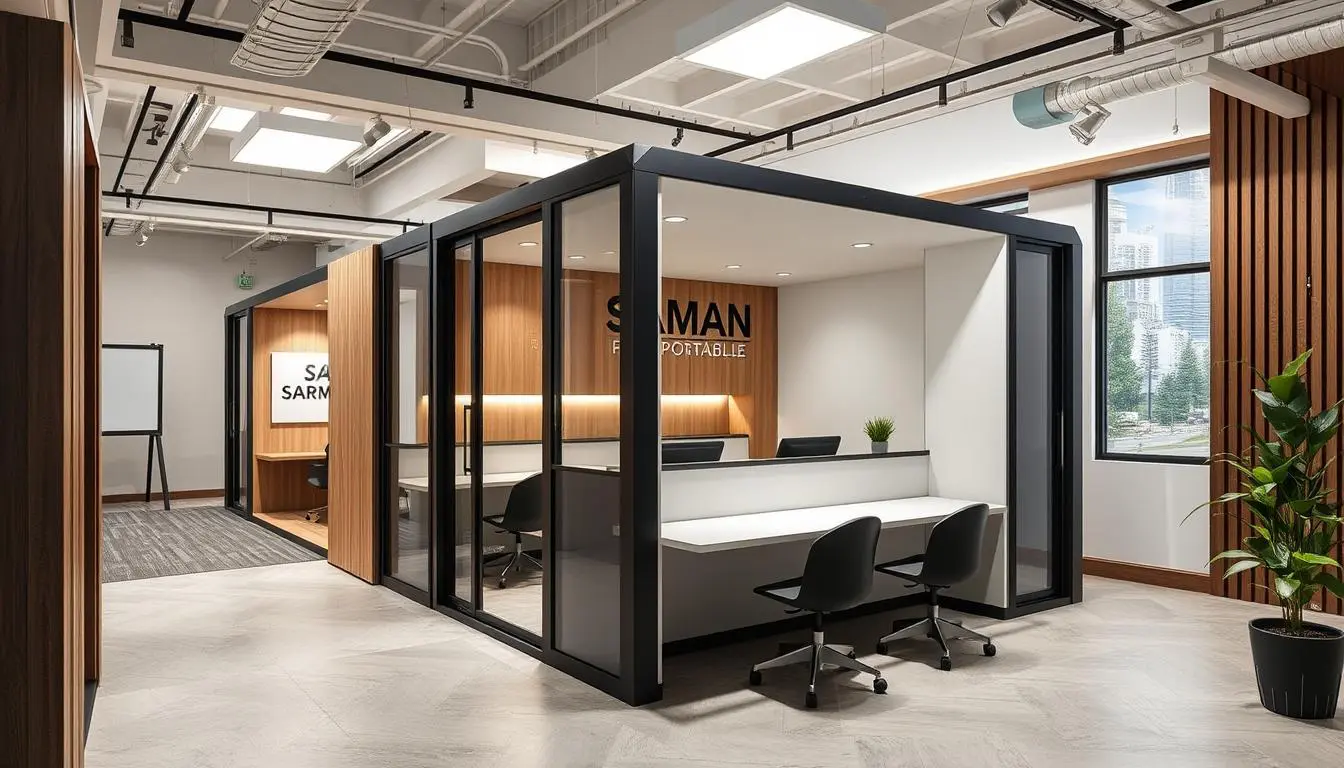
In a world where commercial real estate costs continue to rise, businesses are seeking innovative solutions to optimize their office spaces. The evolution of prefab office spaces offers a compelling answer to this challenge, revolutionizing the way companies approach their work environments. But what makes these modern, customizable structures so practical for today’s business needs?
Flexibility has become a critical factor in office design, as companies navigate the ever-changing nature of work and the increasing pressure on real estate budgets. Prefab office spaces provide the versatility to adapt to diverse work styles, from collaborative teamwork to individual-focused tasks. These modular rooms offer a solution to traditional space constraints, maximizing efficiency and enabling businesses to evolve with their needs.
Key Takeaways
- Prefab office spaces offer a modern, customizable solution to rising commercial real estate costs
- Flexible design accommodates diverse work styles, from collaborative to individual-focused tasks
- Modular construction maximizes space utilization and adapts to evolving business needs
- Cost-effective and eco-friendly, prefab offices provide a sustainable alternative to traditional construction
- Rapid deployment and minimal disruption make prefab offices an attractive option for growing businesses
Understanding Modern Prefabricated Construction Solutions
The world of construction has witnessed a remarkable evolution, with prefab office spaces emerging as a game-changing solution for businesses seeking modern, customizable, and practical workspaces. Prefab construction technology has advanced significantly, offering high-quality, durable structures that can be tailored to meet specific requirements. These prefab office spaces are constructed using quality steel and engineered components, ensuring strength and longevity.
Evolution of Prefab Construction Technology
The evolution of prefab construction technology has led to improved quality control, as components are manufactured in controlled factory environments. This allows for a more precise and efficient construction process, resulting in a higher-quality end product. Additionally, the modular nature of prefab offices enables flexibility in design and future modifications, making them an attractive option for businesses seeking adaptable workspaces.
Key Components of Modern Prefab Structures
The key components of modern prefab structures include modular units that can be easily assembled and disassembled. This flexibility allows businesses to tailor their office spaces to their specific needs, whether it’s expanding, downsizing, or relocating. The use of quality materials, such as engineered steel, ensures the durability and longevity of these prefab prefab office solutions, making them a practical and sustainable choice for sustainable architecture buildings and Portable Porta Cabins.

Prefab construction offers a range of benefits, from cost-effectiveness and time-saving installation to environmental sustainability and customization options. By understanding the evolution and key components of modern prefab structures, businesses can make informed decisions about their workspace needs and explore the advantages of this innovative construction approach.
The Rise of Prefab Office Spaces in Commercial Construction
Eco-Friendly Porta Cabins, Portable Living Cabins, and Premium Portable Cabins are becoming increasingly popular in the commercial construction industry. These prefab office spaces offer numerous advantages, including faster construction timelines, reduced costs, and minimal disruption to existing operations. Companies are recognizing the efficiency, sustainability, and adaptability of these innovative solutions, driving the rise of prefab offices as the preferred choice for modern workspaces.
The surge in popularity of prefab office spaces is driven by the growing need for flexible workspaces that can be quickly deployed and easily modified as organizations expand and evolve. During the last recession, many skilled laborers left the construction industry and did not return, making prefabricated buildings more appealing. Marriott International announced plans to modularly construct 13% of its North American developments in 2017, showcasing the industry’s embrace of these sustainable and practical solutions.
Off-site construction can benefit a project’s schedule, budget, and skilled labor requirements when done correctly. The rise in popularity has many developers determining how off-site construction can help their projects be more cost-effective. Certain asset classes like student housing, education buildings, hospitals, data centers, and senior housing have more opportunity for modular construction, particularly in areas facing skilled labor shortages.
The cost-effectiveness of Eco-Friendly Porta Cabins, Portable Living Cabins, and Premium Portable Cabins is a significant factor driving their adoption in the Indian market. Prefabricated structures for residential projects in India range from INR 1,500 to INR 2,500 per square foot, generally lower than traditional brick-and-mortar construction costs of INR 2,000 to INR 3,500 per square foot.

The rise of prefabricated structures in India is further fueled by factors such as affordable housing needs, rapid urbanization, and government initiatives promoting sustainable and smart cities. In states like Maharashtra and Gujarat, prefabricated techniques have been utilized to construct thousands of affordable housing units as part of government schemes to address urban housing shortages.
Commercial and office buildings, particularly in tier-2 and tier-3 cities in India, are increasingly constructed using prefabricated methods to quickly meet the demand for modern office spaces and accommodate business expansion. Additionally, the hospitality and tourism sector is embracing Eco-Friendly Porta Cabins, Portable Living Cabins, and Premium Portable Cabins to cater to the growing demand for eco-tourism in unique and challenging locations.
The advancements in technology, such as Building Information Modeling (BIM) and 3D printing, have significantly improved the efficiency and quality of prefabricated components in India, driving the construction industry toward more sustainable practices. As the demand for flexible, cost-effective, and environmentally conscious workspaces continues to grow, the rise of prefab office spaces is set to transform the commercial construction landscape.
Benefits of Choosing Portable Building Solutions
When it comes to office spaces, modern prefabricated or portable building solutions offer a range of compelling benefits. These innovative structures not only provide cost-effectiveness and a swift installation process but also contribute to environmental sustainability.
Cost-Effectiveness and ROI
Prefabricated portable offices are budget-friendly, with construction costs up to 50% lower than traditional brick-and-mortar buildings. This advantage is achieved through efficient resource utilization, reduced material waste, and faster assembly times. Modular projects can be completed 20-50% faster compared to conventional construction methods, leading to significant savings in labor and overhead expenses.
Time-Saving Installation Process
The assembly of a portable office on-site takes around 50% less time than permanent construction with concrete and steel. This rapid installation process minimizes disruption to business operations, allowing companies to move into their new workspace quickly and seamlessly.
Environmental Sustainability
Prefabricated office structures are designed with environmental responsibility in mind. The manufacturing process utilizes up to 90% less waste materials compared to traditional construction methods, resulting in a 53% reduced greenhouse gas impact. Additionally, these modular buildings are made of eco-friendly materials and contribute to a smaller carbon footprint, using 48% less freshwater and 65% fewer material sources.

Portable building solutions from Pressmach Infrastructure, a leading provider of commercial, institutional, and residential modular structures, offer unparalleled benefits for businesses seeking efficient, sustainable, and cost-effective office spaces.
Quality Construction and Durability Standards
When it comes to Flexible Container Offices, Affordable Container Spaces, and Compact Portable Offices, quality construction and durability standards are of utmost importance. At EPACK Prefab, we take great pride in our commitment to delivering high-quality, long-lasting prefab solutions that exceed industry standards.
Our state-of-the-art manufacturing facilities allow us to meticulously engineer and monitor every component of our prefab structures, ensuring consistent quality across all modules. These Flexible Container Offices and Affordable Container Spaces are designed to withstand a variety of weather conditions and are built to adhere to local building codes, providing our clients with the peace of mind they deserve.
- Durability Factors: Our Compact Portable Offices are engineered to be highly resistant to seismic forces, extreme weather, and environmental disasters, ensuring they maintain their structural integrity for years to come.
- Construction Efficiency: Prefabricated construction allows us to build our Flexible Container Offices and Affordable Container Spaces up to two times faster than traditional methods, expediting the building process without compromising quality.
- Reduced Construction Waste: Our commitment to sustainable practices means we strive to minimize construction waste and maximize material efficiency, further contributing to the long-term viability of our Compact Portable Offices.
At the heart of our Flexible Container Offices, Affordable Container Spaces, and Compact Portable Offices lies a focus on energy efficiency, structural strength, and corrosion resistance. This unwavering dedication to quality construction and durability standards sets us apart as a leader in the prefab industry, providing our clients with a reliable and long-lasting solution for their business needs.

Customization Options for Prefab Offices
When it comes to Flexible Portable Workspaces, Portable Office Manufacturer solutions offer a world of customization possibilities. Prefab offices are designed to be adaptable, allowing businesses to create functional and visually appealing spaces that reflect their unique brand identity and culture.
Interior Design Flexibility
The interior layout of prefab offices can be tailored to suit diverse business needs. From open-concept workspaces to private offices, conference rooms, and breakout areas, the configuration can be customized to maximize productivity and employee comfort. Businesses can choose from a variety of finishes, furniture, and lighting options to create a cohesive and visually stunning environment.
Exterior Finishing Choices
Prefab offices also offer a wide range of exterior finishing options, allowing businesses to maintain a professional and consistent appearance that seamlessly integrates with the surrounding architecture. Customization possibilities include various sizes, color schemes, and design elements that can be incorporated to achieve the desired aesthetic.
Whether a startup seeking a cost-effective workspace or an established organization looking to expand, the customization capabilities of prefab offices make them an attractive and practical solution for businesses of all sizes.

Speed of Implementation and Minimal Disruption
One of the key advantages of small portable office for sale and other portable building solutions is the speed of implementation and minimal disruption to existing operations. These prefab structures can be installed in a fraction of the time required for traditional construction, allowing businesses to resume their activities quickly.
The off-site manufacturing process reduces on-site construction time, minimizing noise, dust, and other disruptions. This efficiency is particularly beneficial for businesses that need to expand or relocate rapidly without significant downtime.
- Modular offices reduce construction time significantly compared to traditional construction methods, allowing for on-site assembly in a matter of days or weeks.
- Modular construction leads to lower labor costs due to reduced construction time.
- Modular offices offer flexibility with the ability to add or remove modules with minimal disruption, allowing businesses to scale their office space efficiently.
With nearly 20 years of experience in the modular building industry, PF Modular has supplied prefab offices to various sectors, including schools, manufacturing facilities, and local councils. The industry’s growth is expected to continue, with the US and European prefabrication and modular construction market estimated to reach USD 130 billion by 2030, producing an annual saving of USD 22 billion.

By utilizing effective modeling tools, engineers can access cost savings of up to 20% compared to traditional on-site building construction. Additionally, construction time can be reduced by up to 50% when incorporating prefabrication and modular construction methods, leading to a decrease in material costs and wastage.
Ongoing technological advancements, such as the use of BIM modeling to detect errors in the design phase and ensure proper component fit, are expected to further increase the efficiency and quality of prefab construction solutions. As the industry continues to evolve, the integration of 4D (time) and 5D (cost) modeling functionality is anticipated, providing even greater cost and time savings for businesses seeking modern, customizable, and practical office spaces.
Sustainable Features and Environmental Impact
Prefab office spaces are not only modern and practical, but they also prioritize sustainability and environmental responsibility. These innovative structures incorporate a range of energy-efficient solutions that contribute to reduced carbon footprints and a healthier planet.
Energy Efficiency Solutions
Prefab office buildings are designed with energy efficiency in mind. Improved insulation, LED lighting, and smart HVAC systems work together to minimize energy consumption and operating costs. Prefab steel buildings in particular are known for their thermal efficiency, helping to regulate indoor temperatures and reduce the reliance on heating and cooling systems.
Waste Reduction Benefits
- The manufacturing process for prefab houses for sale and other prefab structures generates up to 90% less waste compared to traditional construction methods.
- The use of recyclable and sustainable materials, such as bamboo and reclaimed wood, further contributes to the environmental impact of these sustainable architecture buildings.
- The ability to repurpose or relocate prefab structures allows for a longer lifespan and reduced waste, aligning with the growing demand for circular economies and sustainable practices.
By incorporating these innovative sustainable features, prefab office spaces not only reduce their environmental impact but also drive the industry toward a more eco-conscious future, meeting the increasing expectations of environmentally aware businesses and clients.

Cost Analysis: Traditional vs Prefab Construction
When it comes to building your business, the choice between traditional and prefab construction can have a significant impact on your bottom line. A cost analysis reveals the clear advantages of opting for Portable Porta Cabins and Eco-Friendly Porta Cabins over traditional construction methods.
The streamlined manufacturing process of prefab buildings, along with reduced labor requirements and shorter construction timelines, result in overall cost savings. This is evident in areas such as material waste reduction, lower financing costs due to faster completion, and reduced on-site labor expenses.
- Industry leaders estimate that choosing modular over traditional construction can save you 20% or more on overall building costs.
- Prefabricated construction can be completed in 6-8 weeks or less, significantly reducing construction time compared to traditional construction, which usually takes 6-16 months to finish.
- Prefabricated construction reduces construction costs by having 90% of its manufacturing done in a controlled factory environment, avoiding issues like labor shortages and weather conditions that can increase costs.
Moreover, the ability to relocate or modify prefab structures provides long-term cost benefits as your business evolves and grows. This flexibility allows you to adapt your workspace to changing needs, maximizing your investment.
While traditional construction may be recommended for more complex designs or when unusual materials are a priority, the cost savings and practical advantages of Portable Porta Cabins and Eco-Friendly Porta Cabins make them a compelling choice for many businesses. By embracing the power of prefab, you can optimize your construction costs and focus on building a successful, sustainable enterprise.
Flexibility and Scalability for Growing Businesses
In the rapidly evolving business landscape, adaptability and growth are key to success. That’s where Portable Living Cabins and Premium Portable Cabins shine as the ideal solution for growing enterprises. These prefab office spaces offer unparalleled flexibility, allowing businesses to easily expand, reconfigure, or even relocate their operations to accommodate changing needs.
Expansion Capabilities
Modular designs of these prefab structures enable seamless additions or modifications without extensive remodeling. As a business expands, additional modules can be integrated to create more space, reconfiguring the layout to maximize efficiency. This scalability ensures that a company’s workspace can grow alongside its ambitions, providing the freedom to adapt and thrive.
Relocation Options
The ability to relocate entire office spaces is a game-changer for businesses. Portable Living Cabins and Premium Portable Cabins can be easily transported to new locations, allowing companies to take advantage of emerging opportunities or respond to strategic shifts. This mobility provides the flexibility to move operations as needed, whether it’s to a different city or a new office complex, without the hassle and expense of traditional construction.
In a time of rapid change and growth, Portable Living Cabins and Premium Portable Cabins offer the perfect blend of flexibility and scalability, empowering businesses to adapt and expand effortlessly. By investing in these innovative prefab solutions, growing companies can focus on their core operations, confident that their workspace can evolve alongside their ambitions.

Maintenance and Long-term Durability
When it comes to modern Modular Portable Cabins and Portable Cabins India, the focus on long-term durability and easy maintenance sets them apart. These prefabricated office spaces are engineered to withstand the test of time, thanks to the use of high-quality materials and controlled manufacturing processes.
Modular buildings can have a life expectancy of 50 years or more, with some lasting up to 100 years, depending on the quality of materials, design, and maintenance. These structures are built to adhere to the same rigorous building codes and regulations as traditional construction, ensuring their structural integrity and safety.
- High-quality materials used in modular construction contribute to longevity and durability.
- Proper maintenance and timely repairs are crucial for extending the life expectancy of modular buildings.
- Modular construction can offer superior durability due to quality control processes and reduced exposure to harsh weather conditions during construction.
Regular inspections twice a year are recommended for prefabricated commercial buildings, with additional checks advised after extreme weather events. Proper roof maintenance can extend the life of a prefab building by 10–15 years, while addressing corrosion and rust is crucial, especially in coastal and high humidity areas.
Maintenance of HVAC systems is essential for energy efficiency and performance optimization in prefabricated commercial buildings. Insulation checks and ensuring energy efficiency through proper maintenance of insulation materials like EPS or PUF panels are critical for reducing operational costs and ensuring product safety in commercial settings.

The longevity and adaptability of Modular Portable Cabins and Portable Cabins India make them a smart investment for businesses seeking sustainable, long-term workspace solutions. With proper care and maintenance, these innovative structures can serve as reliable and cost-effective office spaces for years to come.
Regulatory Compliance and Safety Standards
When it comes to prefab office spaces, regulatory compliance and safety standards are of utmost importance. At our company, we ensure that our Container Offices Near You and Flexible Container Offices are built to meet or exceed all necessary requirements. Our structures adhere to local building codes, fire safety regulations, and occupational health standards, providing our clients with the peace of mind that their office spaces meet all legal and safety requirements.
The controlled manufacturing environment of our prefab offices allows for consistent implementation of safety features and quality control measures. We understand that the health and well-being of your employees are paramount, which is why we go above and beyond to ensure that our Flexible Container Offices prioritize safety at every stage of the construction process.
- Compliance with Building Regulations 2010 for structural integrity, fire safety, and accessibility
- Adherence to the Health & Safety at Work Act 1974 for protecting employee welfare
- Electrical installations that meet the requirements of BS 7671 for electrical safety
- Adequate ventilation, lighting, and heating to maintain a comfortable and productive work environment
- Robust fire detection and extinguishing systems to ensure the safety of occupants
- Regular maintenance and inspections to address potential issues and prevent costly problems
- Accessibility features like ramps, wider doorways, and adjustable workstations in line with The Equality Act 2010
By prioritizing regulatory compliance and safety standards, we ensure that our Container Offices Near You provide a secure and compliant workspace for your business, allowing you to focus on growth and success without worrying about legal or safety concerns.
Modern Amenities and Technology Integration
As businesses adapt to the evolving landscape, Affordable Container Spaces and Compact Portable Offices are leading the charge in integrating state-of-the-art amenities and cutting-edge technology. These modern prefab solutions are designed to create productive, comfortable, and future-ready work environments.
Smart Office Features
Automated lighting, climate control, and advanced security systems are seamlessly incorporated into the design of these prefab offices. These smart features not only enhance efficiency but also contribute to a more comfortable and enjoyable work experience for employees. By leveraging the latest advancements in building technology, businesses can create spaces that adapt to their needs and evolve with their growth.
Connectivity Solutions
Reliable and high-speed internet connectivity is a crucial requirement for modern businesses. Affordable Container Spaces and Compact Portable Offices are equipped with state-of-the-art networking solutions, ensuring uninterrupted digital communication and collaboration. Employees can stay connected, access vital resources, and work productively, regardless of the location or size of the prefab office.
The integration of modern amenities and technology into these prefab structures demonstrates the commitment to creating versatile and future-proof workspaces. By prioritizing employee comfort, productivity, and seamless connectivity, businesses can cultivate a dynamic and innovative work environment that supports their growth and evolution.
Conclusion
As we’ve explored, the world of Flexible Portable Workspaces and Portable Office Manufacturer solutions is transforming the commercial construction landscape. Prefab office spaces represent the future of efficient, sustainable, and adaptable workspace solutions for businesses in India. These modern, customizable structures offer rapid deployment, cost-effective implementation, and the flexibility to grow and evolve with an organization’s needs.
By embracing the power of prefabricated construction, companies can minimize disruption, reduce environmental impact, and unlock new avenues for growth and expansion. The seamless integration of smart office features and technology further enhances the appeal of these innovative workspaces, catering to the evolving demands of today’s businesses.
As the demand for agile and eco-friendly workspace solutions continues to rise, the Flexible Portable Workspaces and Portable Office Manufacturer industry is poised to lead the charge in redefining the future of commercial construction. Businesses that prioritize efficiency, sustainability, and adaptability will find that prefab office spaces provide the perfect blend of practical and progressive solutions to meet their needs.
FAQ
What are the key benefits of choosing prefab office spaces?
The key benefits of prefab office spaces include cost-effectiveness, time-saving installation, environmental sustainability, high-quality construction, and the ability to customize and adapt to changing business needs.
How do prefab office spaces compare to traditional construction in terms of cost and efficiency?
Prefab office spaces offer significant cost savings and improved efficiency compared to traditional construction methods. The streamlined manufacturing process, reduced labor requirements, and shorter construction timelines result in overall cost savings, with up to 50% faster completion times and up to 90% less material waste.
What customization options are available for prefab office spaces?
Prefab office spaces offer extensive customization options, including tailored interior layouts, exterior finishing choices, and various sizes, configurations, and color schemes. This allows businesses to create functional and aesthetically appealing spaces that reflect their brand and culture.
How do prefab offices address environmental sustainability?
Prefab office spaces incorporate sustainable features that reduce environmental impact, such as energy-efficient solutions, improved insulation, LED lighting, and smart HVAC systems. The manufacturing process also significantly reduces waste, with up to 90% less waste generated compared to traditional construction methods.
What are the flexibility and scalability features of prefab office spaces?
Prefab office spaces offer unparalleled flexibility and scalability for growing businesses. These structures can be easily expanded, reconfigured, or relocated to accommodate changing needs. Modular designs allow for seamless additions or modifications without extensive remodeling, providing businesses with the freedom to adapt their workspace as their operations evolve.
How do prefab offices ensure quality and regulatory compliance?
Prefab office spaces are designed to meet or exceed regulatory compliance and safety standards. Manufacturers ensure that these structures adhere to local building codes, fire safety regulations, and occupational health standards. The controlled manufacturing environment allows for consistent implementation of safety features and quality control measures.
What modern amenities and technology solutions are integrated into prefab office spaces?
Prefab office spaces come equipped with state-of-the-art amenities and integrated technology solutions, such as automated lighting, climate control, security systems, and advanced connectivity for high-speed internet and networked operations. These features enhance productivity and create a comfortable, efficient work environment that can adapt to future technological advancements.
 Container Cafe
Container Cafe

















































































